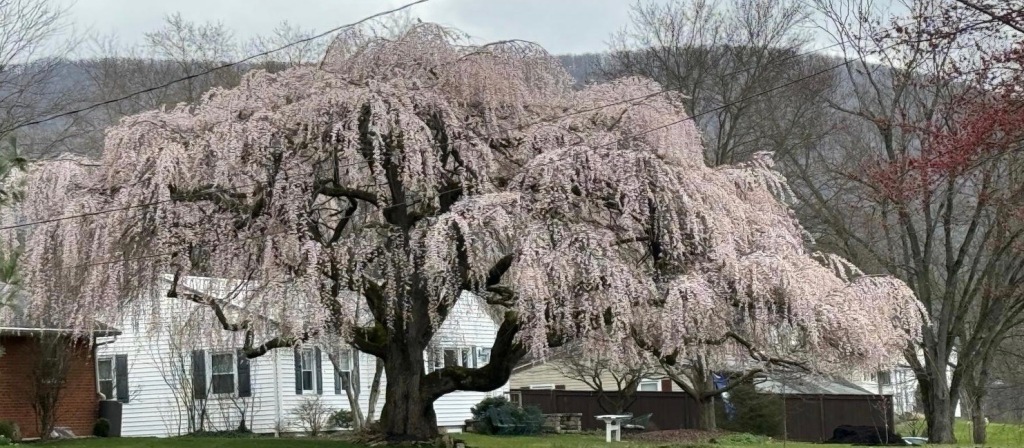Habitat: He was about 40 yards from us, headed toward the marsh.
Location: Centre County, PA.
Time of Year: Early spring.
Plumage: All white with a dark blue spot on his chest.
Behavior: Showing agility with swoops and turns.
Sound: Silent.
Size, Shape: BIG!
This was no junco. One day, perhaps an Eagle, Falcon, Raven or Seahawk. Only in Happy Valley.
A flock of us, with borrowed binoculars hanging from our necks, were gathered at Millbrook Marsh Nature Center for a Birds & Bagels program. What fun! Doug, our birding leader, was using one of his Recreation, Park and Tourism Management students (and Nittany Lion football player) as an example of what to look for when identifying birds in Central PA.
Sure, there are 10,000 species of birds worldwide, but less than 300 make an appearance in our neck of the woods. Even the youngsters in the group could identify several of them already—cardinal, robin, blue jay, mallard. It just takes curiosity, attention, observation, a field guide, and perhaps the free Cornell University Merlin app (which provides photos and sounds of birds) on your phone.
Doug pointed out that winter and early spring, before the trees leaf out, is a perfect time for birding because our feathered friends are easily spotted, not hidden behind foliage.
A chunky black bird with white specks lands in a nearby walnut. The Millbrook Marsh trail becomes a stage.
“Nay, I’ll have a starling shall be taught to speak nothing but ‘Mortimer’,” booms Doug, his voice taking on an actor’s confidence from Henry IV.
So now, Doug tells us how a group of William Shakespeare fans brought the European starling (Sturnus vulgaris) to the United States. The American Acclimatization Society so loved Shakespeare that the group wanted to introduce every species of flora and fauna mentioned in his plays to America. At least that’s how the story goes.
In 1890, a member of the society released 60 European starlings into New York’s Central Park. The following year, 40 more. There are now an estimated 150 million starlings in North America.
I couldn’t wait to learn more. I searched the web and found similar accounts—then I came across Duke University’s Environmental Humanities research article saying that the story was “birding folklore”. While bits and pieces may be true, few records exist. Over the years the passed-on information was developed as a cautionary tale against importing species that could become invasive.
So, while all of the world is a stage, I’ve decided to focus on my small part. I’m going to buy a pair of binoculars and see what I can see. Laurie Lynch

